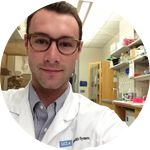About This Project
Addiction and drug dependence are preventable and treatable diseases. Understanding the neurophysiological basis of these diseases will help us further advance medical models for addiction treatment and recovery. Donations go to support this non-profit venture! Together, we can build a better future!Ask the Scientists
Join The DiscussionWhat is the context of this research?
The main research objective is to understand the effect of chronic opiates, specifically morphine, on the functional connectivity of the brain. Mapping the opiate-induced changes in the fine structure of the central nervous system will yield significant insight into the bio-behavioral component of addiction, as structure is often related to function in biology. By examining and analyzing how the basic neural circuitry of the brain is rewired by chronic opiate abuse, my goal is to help further advance scientific based models for addiction treatment and recovery.
What is the significance of this project?
Millions of Americans suffer from addiction and drug dependence. Addiction is a complex neurological disease, influenced by an abundance of genetic, environmental and developmental factors. Until recently, however, addiction and dependence were considered moral failings rather than preventable and treatable diseases. Punitive criminal justice strategies, implemented to help control and regulate substance abuse, have all but failed at reducing the scope and burden of this ever-growing public health issue. By advancing the neuroscience of addiction, we can replace this prescribed stigma and ineffective punishment with understanding and proper medical treatment. This research project will take us one step closer to realizing this neuroscience research-supported medical paradigm, as understanding the neurophysiological underpinning of these diseases is necessary for the advancement and discovery of new treatment and recovery options for patients.
Addiction is not a rare disease. It affects millions worldwide, the effects of which are widespread and costly. For instance, the total economic cost of addiction, estimated to exceed half a trillion dollars in the United States alone, is twice that of any other disease affecting the brain, including Parkinson’s and Alzheimer’s disease. It is worth our time and effort to make a difference by investing in research dedicated to helping reduce the overwhelming toll drug abuse and addiction takes on individuals, families and communities. As a neuroscience major who believes in the power of research in public health and medicine, I am excited by this wonderful opportunity to change the way we think about and treat these diseases, and I am confident that this project is a step in the right direction.
What are the goals of the project?
This research project is pushing a modern approach to high-resolution digital mapping of neural networks. With your help, we will be able to purchase the materials required to run an advanced brain imaging protocol at the Laboratory of Neuroimaging here on campus. The high-resolution images will enable us to perform detailed, fine-structural analyses on how exactly chronic opiates rewire dopaminergic projections in the brain. After the images have been digitally analyzed we plan to build a 3D model of the observed shifts to double as an interactive public resource available on the web and as tool for further study. We are taking a step away from traditional funding methods to engage the public in an amazing opportunity to support an exciting basic research project that will yield medically relevant insight into addiction. By crowd sourcing our discoveries we hope to provide a way to get involved, while fueling public access, support and interest in neuroscience. We can’t wait to get started; all we need is your help!
Thank you!Budget
The budget is divided among three main components: preparing brain tissue, running the imaging protocol, and purchasing scientific consumables.
Meet the Team
Team Bio
Maxwell Roth is a Junior in the Undergraduate Interdepartamental Neuroscience Program at UCLA. By studying how the fine structure of the nervous system changes in response to chronic opiate use he hopes to broaden the understanding of how the brain may be implicated in human health and disease, specifically addiction.Maxwell Roth
Maxwell Roth is a Junior in the Undergraduate Interdepartamental Neuroscience Program at UCLA. By studying how the fine structure of the nervous system changes in response to chronic opiate use he hopes to broaden the understanding of how the brain may be implicated in human health and disease, specifically addiction.
Additional Information
A big thanks to Chris Breault and Andre Bato for directing and filming the video.Also I'd like to thank Noah Strouse for helping to develop this project proposal with me!Citations for Video:
NIDA Statistics Resources and
Ethan Perlstein, Crowd Sourcing Discovery
Project Backers
- 47Backers
- 101%Funded
- $3,300Total Donations
- $68.75Average Donation
